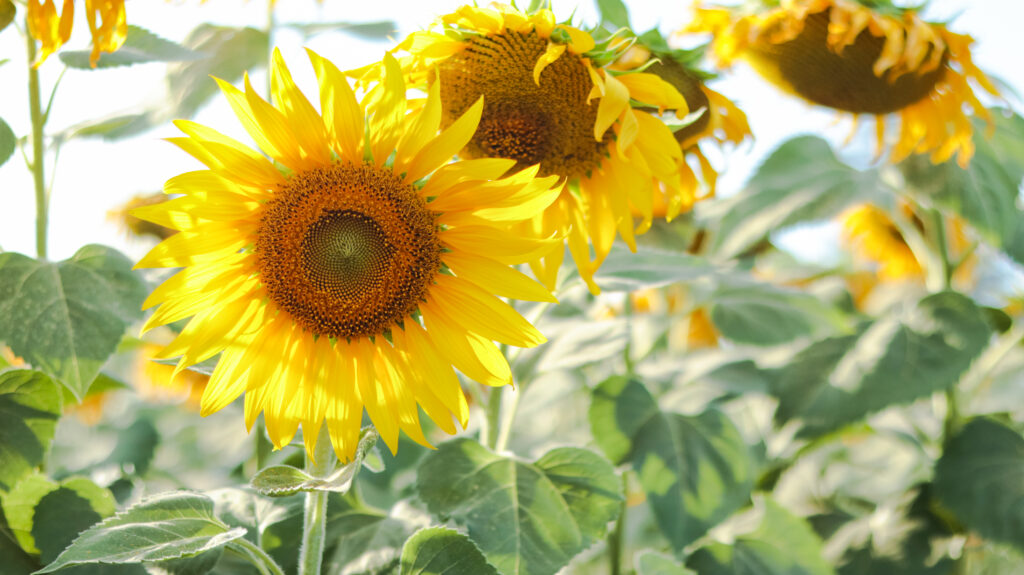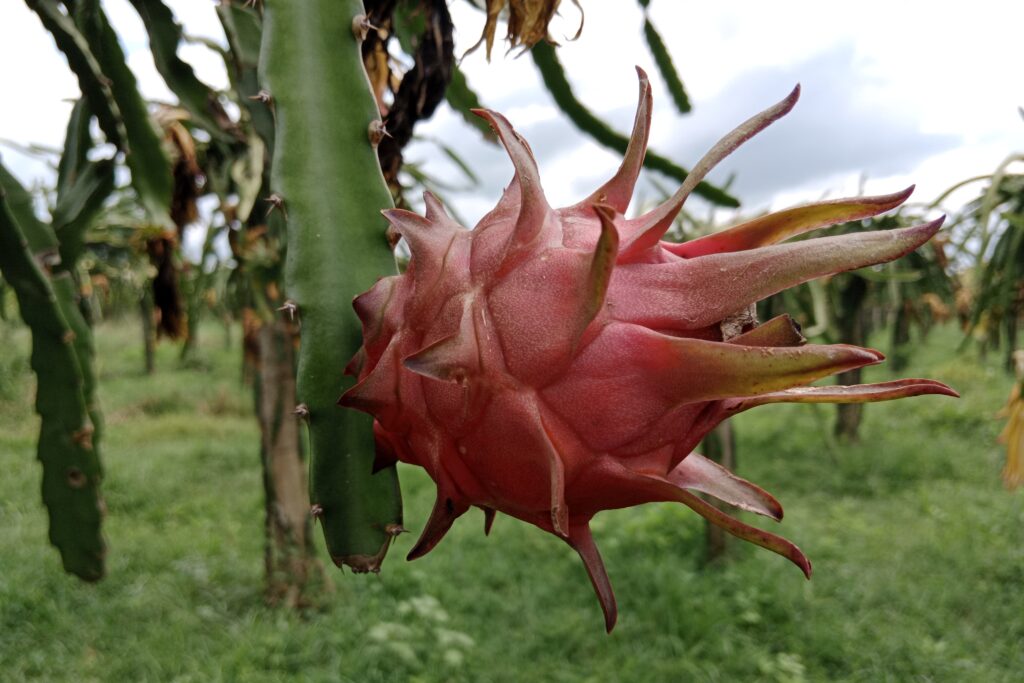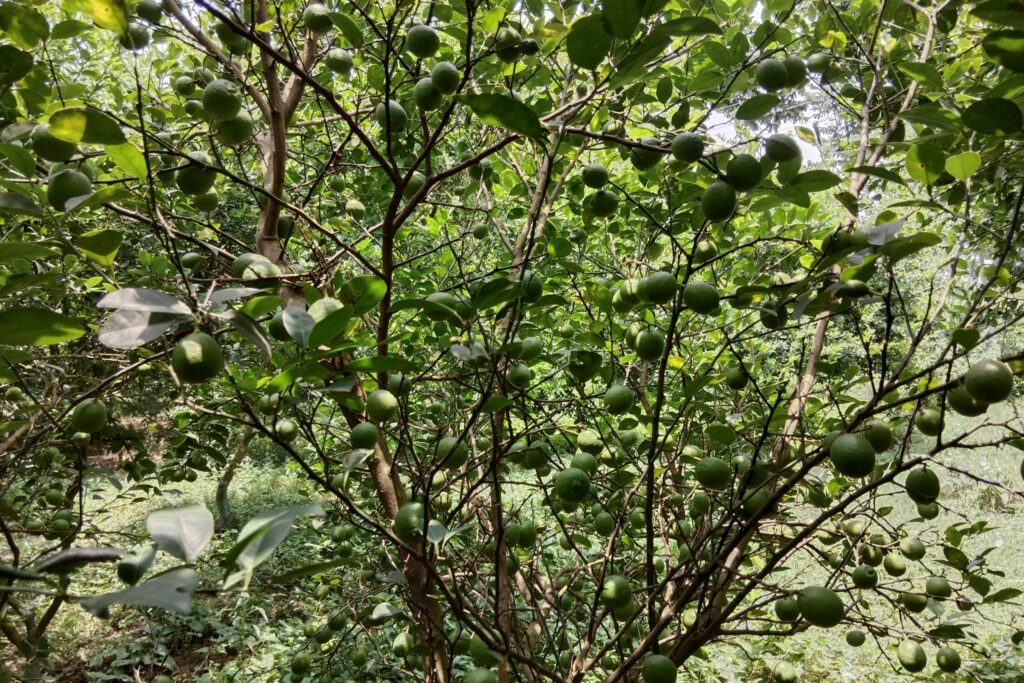Sunflower Farming
Sunflower farming profit per acre demonstrates a strong economic potential, with a total investment of NRs 45,000 yielding an estimated income of NRs 110,000 from 1,100 kg of sunflower sold at NRs 100 per kg. This results in a net profit of NRs 65,000, reflecting a profit margin of 59.1%, where nearly 60% of the income is retained as profit. Additionally, the Return on Investment (ROI) stands at an impressive 144.4%, indicating that farmers earn 1.44 times their initial investment, making sunflower farming a lucrative venture.

Land Preparation
Land preparation involves a series of steps to optimize soil conditions for planting, starting with deep plowing (15–20 cm) using a moldboard plow to incorporate crop residues, improve aeration, and reduce soil-borne pests and diseases. This is followed by 2–3 cross harrowings with disc harrows to break large clods, level the field, and incorporate pre-emergence herbicides if needed.
Remaining clods are crushed, and the field is leveled using a plank or leveler to create a fine tilth for effective seed-soil contact. In areas prone to waterlogging or requiring efficient irrigation, ridges, furrows, or raised beds are prepared to conserve moisture, particularly in rainfed regions. The ultimate goal is a clean, weed-free seedbed ready for planting.
Soil Type
The ideal soil type for cultivation is well-drained, deep, fertile loamy soil with good water-holding capacity. The crop can adapt to various soils, including sandy loams and clay loams, and shows moderate tolerance to salinity, alkalinity, and a pH range of 6.0 to 8.5, with an optimal range of 6.5 to 7.5. Good drainage is critical, as waterlogged conditions can severely damage roots and increase disease risk. Heavy clay soils prone to waterlogging and shallow soils that restrict taproot growth should be avoided.
Climatic Requirements
| Climatic Factor | Requirement |
| Temperature | Germination: Minimum soil temperature 8-10°C (46-50°F); Optimum 25-30°C (77-86°F). |
| Growth: Optimum daytime temperature 21-25°C (70-77°F); Night temperature 15-18°C (59-64°F). | |
| Flowering and Seed Filling: Warm, sunny days (20-30°C / 68-86°F) and cool nights are ideal. Temperatures above 35°C (95°F) can cause pollen sterility. | |
| Moisture | Moderately drought-tolerant due to a deep taproot. Requires adequate moisture during germination, seedling establishment, flowering, and seed filling (20-25 days after flowering). Total water requirement: ~500-600mm. Sensitive to waterlogging. |
| Sunlight | Long-day plants require abundant sunshine (6-8+ hours daily), especially during flowering and seed development. Cloudy weather during flowering reduces yield. |
Major Cultivars
| Cultivar Name | Plant Height (cm) | Maturity Period (Days) | Yield (quintals/acre) | Oil Content (%) | Seed Characteristics (per 100 seeds) | Special Features |
| Jwalamukhi | 170 | 120 | 7.3 | 42.0 | – | – |
| GKSFH 2002 | Medium Tall | 115 | 7.5 | 42.5 | – | – |
| SH 3322 | 160 | 120 | 8.3 | 43.0 | – | – |
| PSFH 118 | 155 | 98 | 7.6 | 40.5 | – | – |
| PSH 569 (2008) | 162 | 98 | 7.4 | 36.3 | Bold seeds (6.8g) | Late-sowing suitability |
| PSH 996 (2012) | 141 | 96 | 7.8 | 35.8 | Dark bold seeds (6.8g) | Late-sowing suitability |
| DK 3849 (2013) | 172 | 102 | 8.4 | 34.5 | – (4.5g) | – |
| PSH 1962 (2015) | 165 | 99 | 8.2 | 41.9 | Black bold seeds (6.4g) | – |
| PSH 2080 (2019) | 151 | 97 | 9.8 | 43.7 | Black elongated seeds (5.8g) | – |
Seed Rate
For sunflower cultivation, use a seed rate of 2–3 kg/acre for open-pollinated varieties and 2–2.5 kg/acre for hybrids. Prior to sowing, pretreat seeds by first soaking them in water for 24 hours followed by shade drying. Then apply sequential chemical treatments: Thiram (2g/kg seeds) to protect against soil-borne pests/diseases, Metalaxyl (6g/kg seeds) to prevent downy mildew, and Imidacloprid (5–6ml/kg seeds) for insect protection. This combined protocol enhances germination vigor and establishes early crop resilience.
Planting
a) Planting Season
Sunflowers are typically sown during the Rabi season (September-October) after the monsoon recedes, as it offers better yields, reduced disease pressure, and easier harvesting compared to the riskier Kharif season, which is prone to pests, diseases, and harvest-time rains, provided soil temperature and frost conditions are suitable.

b) Spacing
For optimal sunflower growth, maintain a spacing of 60 cm between rows and a distance of 30 cm between individual plants within the row to ensure adequate light penetration, air circulation, and resource access; sow the seeds at a depth of 4-5 cm into warm, moist soil to promote strong germination while protecting them from birds and ensuring good soil contact for moisture uptake.
d) Planting Method
The standard planting method for sunflower is direct seeding, typically implemented using tractor-drawn seed drills for maximum efficiency, though bullock-drawn or manual seed drills are also used; this method ensures uniform seed depth and spacing, with seeds placed at a depth of 3-5 cm in moist soil, or adjusted deeper to 5-7.5 cm if planting into dry soil to access adequate moisture.
e). Number of Plants per Acre
An acre can accommodate approximately 22,484 plants.
Irrigation
Sunflowers require frequent irrigation, with the first application typically needed one month after sowing. Critical stages demanding careful irrigation management are detailed in the table below.
| Growth Stage | Irrigation Requirement | Notes |
| Germination | Ensure adequate soil moisture. | Supports seed sprouting. |
| Seedling Establishment | Maintain sufficient water at 20-25 DAS. | Promotes healthy root and shoot development. |
| Button Stage | Provide consistent moisture during floral bud formation. | Supports flower initiation. |
| Flowering | Avoid water stress at 50-60 DAS. | Critical for proper pollination and flower retention. |
| Seed Filling | Adequate irrigation at 80-95 DAS. | Enhances grain development and prevents yield loss. |
Fertilizer and Manure
| Aspect | Details/Recommendation |
| Nutrient Demand | High: Nitrogen (N), Potassium (K₂O) Moderate: Phosphorus (P₂O₅) Essential: Sulphur (S), Boron (B) |
| Basal Application | (Applied at planting, incorporated during land prep) |
| › Organic | 4-8 tonnes/acre Farmyard Manure (FYM) or Compost. |
| › Inorganic | NPK: Typically apply full P₂O₅ & K₂O, and 1/3 of total N. Common dose: 40-60 kg N, 40-60 kg P₂O₅, 20-40 kg K₂O per acre. Apply Sulphur 15–30 kg S per acre. |
| Top Dressing (N) | (Apply the remaining Nitrogen in two splits) |
| › First Split | 30-35 Days After Sowing (DAS) – during active vegetative growth. |
| › Second Split | 50-55 DAS – at button stage / early flowering. |
| Micronutrients | |
| › Boron (B) | Deficiency Signs: Hollow stems, poor seed set. Treatment: Foliar spray of Boron@2gm/Ltr of water. Timing: Crucial at bud initiation and flowering stages. |
Weed Control
Sunflowers are most vulnerable to weed competition during the first 30-45 DAS. Effective weed management includes cultural practices like timely sowing, crop rotation, and optimal plant population; mechanical methods such as shallow hoeing at 15-20 DAS and 30-35 DAS; and chemical control using pre-emergence herbicides like Pendimethalin (1.0-1.5 kg ai/ha) or Oxyfluorfen (0.15-0.20 kg ai/ha). Post-emergence herbicides (e.g., Quizalofop-ethyl or Imazethapyr) should be applied cautiously after the 4-leaf stage. Integrated Weed Management (IWM) ensures sustainable control.
Pest and Disease Management
Common Insect Pests of Sunflower by Growth Stage
| Growth Stage | Pests | Notes |
| Seedling Stage | • Cutworms • Grasshoppers • Aphids | Early establishment phase vulnerability |
| Vegetative Stage | • Bihar Hairy Caterpillar • Jassids (Leafhoppers) • Whitefly | Foliage feeders affecting plant development |
| Flowering/Seed Filling Stage | • Heliothis/Head Borer (Helicoverpa armigera) • Capitulum Borer • Thrips • Sunflower Moth (Homoeosoma electellum) • Tobacco Caterpillar (Spodoptera spp.) | Critical damage period: Direct impact on yield formation |
| Harvest & Storage Stage | • Birds (Major threat!) • Rodents | Non-insect pests causing significant post-maturity losses |
Major Diseases
a) Alternaria Blight
Alternaria Blight is a serious disease causing a significant reduction in seed and oil yield. Symptoms begin as dark brown to black spots developing initially on the lower leaves, which later spread to the middle and upper leaves. Under severe infestation, spots also appear on the stems and petioles. If infestation is observed, apply four sprays of Mancozeb at 3 grams per liter of water at 10-day intervals.
b) Rust
Rust can reduce sunflower yields by up to 20%. If an infection occurs, apply Tridemorph (1 g/L water) or Mancozeb (2 g/L water), followed by a second spray after 15 days. Alternatively, use Hexaconazole (2 mL/L water) in two applications spaced 10 days apart for effective control.
C) Charcoal Rot
Charcoal Rot causes affected plants to weaken prematurely and exhibit early maturation, accompanied by black ashy stem discoloration. Sudden wilting typically occurs after pollination. For management, apply Trichoderma viride (1 kg/ha) mixed with 20 kg of well-decomposed cow dung or sand to the soil at 30 days after sowing (DAS). Additionally, spot applications of Carbendazim (1 g/liter of water) are performed on infected plants.
d) Stem rot
Stem Rot symptoms typically appear within 40 days of sowing, causing plants to exhibit visible sickness and stunting observable from a distance, alongside white cottony fungal growth on the soil surface near affected stems. As a preventive measure, seed treatment with Thiram (at 2 grams per kg of seeds) must be applied before sowing to mitigate infection.
e). Head Rot
On the rear of ripening heads, Head Rot first manifests as brown, asymmetrical, wet patches. These patches get bigger, becoming pulpy, and sprout a fungal growth that is white and cottony before turning black. Avoid injuring heads prior to flowering or in the early phases of head growth to prevent infection, as wounds greatly enhance susceptibility. Apply two grams of Mancozeb per liter of water as a foliar spray if infection develops.
Harvesting
| Aspect | Details |
| Timing | Harvest when: • Back of head turns lemon-yellow to brown • Bracts (involucre) turn brown and dry • Florets dry and fall off easily • Seeds plump/hard with characteristic hull color (black for oilseed, striped for confectionery) • Seed moisture: 18-20% (mechanical harvest) |
| Indicators | • Heads droop downwards • Seeds resist denting with thumbnail pressure |
| Method | |
| › Manual | • Cut heads with sickle (leave 15-30 cm stalk) • Preferred for small plots, confectionery types, or bird-prone areas • Sun-dry heads before threshing |
| › Mechanical | • Use combine harvesters with sunflower headers • Requires 9-12% seed moisture • Harvest early morning/late evening to reduce shattering • Adjust concave clearance, rotor speed, fan speed carefully |
| Drying | • Immediately dry seeds to 8-10% moisture if harvested above threshold • Methods: Mechanical dryers (<43°C/110°F) or careful sun drying |
| Storage | • Store in clean, dry, rodent-proof containers • Maintain in a cool, ventilated area • Regularly monitor for moisture & pests |
Cost of Investment in Sunflower
| S.N. | Category | Cost (NRs) |
| 1 | Land Preparation (plowing) | 10,000 |
| 2 | Seed per acre | 2,000 |
| 3 | Labor Costs (Seed sowing) | 2,000 |
| 4 | Fertilizers and Manure | 7,000 |
| 5 | Irrigation | 8,000 |
| 6 | Weed Control (pre & post-emergence) | 3,000 |
| 7 | Pest & Disease Control | 3,000 |
| 8 | Harvesting | 5,000 |
| 9 | Post-harvest activities (ginning) | 2,000 |
| 10 | Miscellaneous Costs | 3,000 |
| Total Cost | 45,000 |
Income from Sunflower
| Particulars | Estimated Yield (kg/acre) | Market Price (NRs/kg) | Total Income (NRs) |
| Sunflower yield | 1,100 | 100 | 110,000 |
Analysis of Sunflower Farming Profit Per Acre
The total investment cost for sunflower farming per acre is NRs 45,000, while the total income generated from the estimated yield of 1,100 kg sold at NRs 100 per kg amounts to NRs 110,000. This results in a net profit of NRs 65,000, calculated as total income minus total cost (110,000 – 45,000).
The profitability metrics show a strong profit margin of approximately 59.1% (derived from (65,000 / 110,000) * 100), indicating that nearly 60% of the income is profit. Furthermore, the Return on Investment (ROI) is approximately 144.4% (calculated as (65,000 / 45,000) * 100), meaning the farmer earns a return of 1.44 times the initial investment cost.


